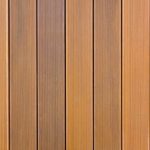Woodworking cut sheets are an essential part of any woodworking project, providing accurate measurements and guidance for creating the perfect pieces. Whether you’re a beginner or a seasoned woodworker, understanding how to create effective cut sheets is crucial for the success of your projects. In this article, we will explore the importance of woodworking cut sheets and provide valuable tips and techniques for creating precise and efficient cut sheets that will elevate your woodworking skills.
Before diving into the details of creating woodworking cut sheets, it’s important to gather the necessary tools and materials. From measuring tapes and pencils to software and apps, having the right resources at your disposal will streamline the cut sheet creation process. We’ll discuss the essential tools and materials needed to ensure that your woodworking cut sheets are accurate and reliable, setting you up for success in your projects.
Planning and measuring are the crucial first steps in creating accurate cut sheets. Without proper planning and precise measurements, your cut sheets may lead to errors and a waste of materials. We will delve into the best practices for planning and measuring, guiding you through the initial stages of preparing to create woodworking cut sheets. By following these steps, you can ensure that your cut sheets are comprehensive and tailored to the specific requirements of your woodworking projects.
Tools and Materials Needed for Creating Woodworking Cut Sheets
Creating woodworking cut sheets requires a few essential tools and materials to ensure accuracy and efficiency in the process. Having the right equipment can make a significant difference in the quality of your cut sheets and ultimately, the success of your woodworking project.
Measuring Tools
Accurate measurements are crucial for creating precise cut sheets. Invest in high-quality measuring tools such as a tape measure, combination square, and a reliable ruler or straight edge. These tools will help you take accurate measurements and ensure that your cut sheets are based on precise dimensions.
Writing Utensils
When creating woodworking cut sheets, it’s important to have reliable writing utensils on hand. Permanent markers, pencils, and pens with fine tips are ideal for marking measurements, labeling parts, and making notes on your cut sheets. Additionally, having different colored markers or pens can help differentiate between various components or stages of the project.
Materials for Creating Cut Sheets
In addition to the right tools, you’ll also need materials for creating your woodworking cut sheets. Sturdy paper or cardstock is ideal for making durable, long-lasting cut sheets that can withstand the wear and tear of the workshop. Additionally, investing in a quality clipboard or portable work surface can provide a stable platform for creating and referring to your cut sheets while working on your woodworking project.
By having the necessary tools and materials on hand, you can ensure that you’re well-equipped to create accurate and efficient woodworking cut sheets. Whether you’re working on a small-scale project or tackling a larger endeavor, having these essentials at your disposal will set you up for success in producing detailed and organized cut sheets.
Planning and Measuring
Before diving into the actual creation of woodworking cut sheets, it’s essential to understand the importance of meticulous planning and precise measurements. This initial step sets the foundation for the rest of the process and ensures that your cut sheets are accurate and efficient. Here, we’ll discuss how to approach planning and measuring for woodworking projects to create seamless cut sheets.
To start, gather all the necessary information about your woodworking project. This includes detailed blueprints or plans, precise measurements of the materials you’ll be working with, and a clear understanding of the different components that will make up the project. By having a comprehensive understanding of the project requirements, you can proceed with creating cut sheets that are tailored to your specific needs.
Once you have all the essential information, it’s time to take precise measurements. Accuracy is key in this step, as any errors in measurement can lead to costly mistakes down the line. Use high-quality measuring tools such as tape measures, squares, and levels to ensure that your measurements are spot on. Additionally, double-check your measurements to catch any discrepancies before moving forward with creating your cut sheets.
Next, consider how you will lay out your materials on each sheet to minimize waste and maximize efficiency. By carefully planning how each component will be nested on a sheet of material, you can reduce scrap and save money on materials for your woodworking project.
| Tools Needed | Materials Needed |
|---|---|
| Tape measure | Wood or other material for project |
| Square | Cutting tools (saw, router, etc.) |
| Level | Measuring tools (ruler, calipers) |
Techniques for Creating Precise and Efficient Woodworking Cut Sheets
Creating precise and efficient woodworking cut sheets is crucial for ensuring that your projects are completed accurately and on time. By following the right techniques, you can streamline the process and avoid mistakes that can lead to costly errors. Here are some tips for creating precise and efficient woodworking cut sheets:
1. Use accurate measuring tools: One of the most critical aspects of creating precise cut sheets is accurate measurements. Invest in high-quality measuring tools such as a tape measure, combination square, and calipers to ensure that your measurements are as precise as possible.
2. Double-check your calculations: Before finalizing your cut sheets, double-check all of your calculations to ensure that they are accurate. One small mistake in your measurements or calculations can lead to significant errors in the final product.
3. Consider grain direction: When laying out your cut sheets, take into account the direction of the wood’s grain. This is especially important when working with hardwoods, as cutting against the grain can result in tear-out and splintering.
By following these techniques, you can create precise and efficient woodworking cut sheets that will help you complete your projects with accuracy and efficiency.
Organizing and Labeling
Creating woodworking cut sheets is essential for ensuring accuracy and efficiency in your woodworking projects. Once you have completed the planning and measuring process, it’s important to organize and label your cut sheets effectively to ensure they are easy to follow during the actual cutting and assembly process.
Here are some tips for keeping your cut sheets organized and easy to follow:
- Use a numbering system: Assign each individual piece or component a unique number. This will make it easier to match the pieces on the cut sheet with the corresponding components in your project plans.
- Include clear diagrams: In addition to numerical labels, include visual representations of each piece on the cut sheet. This could be a simple outline or diagram showing the dimensions of each piece.
- Color-code materials: If you are using multiple types of wood or materials in your project, consider using color-coding on your cut sheets. This can help prevent confusion and ensure that you are using the correct material for each component.
- Group similar pieces together: Organize your cut sheet so that similar pieces are grouped together. This makes it easier to locate all the necessary components when it comes time to start cutting.
- Label dimensions clearly: Ensure that the dimensions of each piece are clearly labeled on the cut sheet. This will prevent any errors or confusion during the cutting process.
By following these tips, you can create organized and easy-to-follow woodworking cut sheets that will streamline your project and minimize errors during construction. Additionally, utilizing software or apps specifically designed for creating cut sheets can further enhance organization and efficiency in your woodworking projects.
Utilizing Technology
In the modern woodworking industry, technology has played a crucial role in streamlining various processes, including the creation of cut sheets. Using software and apps for creating woodworking cut sheets not only saves time but also ensures accuracy and efficiency in the cutting process.
One of the most popular types of software used for creating woodworking cut sheets is CAD (Computer-Aided Design) software. CAD software allows woodworkers to create detailed and precise drawings of their projects, including exact measurements and specifications for each piece of wood. This information can then be used to generate accurate cut sheets, minimizing errors and material waste.
Another helpful tool is cut list generating software or apps. These specialized programs are designed specifically for creating optimized cut lists based on the available materials and project requirements. By inputting the necessary parameters, such as dimensions and quantity of wood needed, these tools can automatically generate a detailed cut sheet that minimizes waste while maximizing usage.
Finally, there are project management apps that offer features for creating and organizing woodworking cut sheets. These apps allow users to input project details, including material lists and measurements, and then generate digital cut sheets that can be easily accessed and shared with team members or clients.
Overall, utilizing technology in the form of software and apps can greatly streamline the process of creating woodworking cut sheets. It helps to ensure accuracy, efficiency, and organization throughout the entire cutting process.
| Technology Tool | Benefits |
|---|---|
| CAD Software | Precise measurements and specifications |
| Cut List Generating Software/Apps | Optimized cut lists to minimize waste |
| Project Management Apps | Digital organization and sharing capabilities |
Troubleshooting Common Issues With Woodworking Cut Sheets
Incorrect Measurements
One common issue that woodworkers may encounter when creating cut sheets is incorrect measurements. This can lead to wasted material and a lot of frustration. To avoid this, it’s important to double-check all measurements and calculations before finalizing the cut sheet. Using precise measuring tools and taking the time to measure each piece accurately can help prevent this issue.
Unclear Labeling
Another issue that can arise with woodworking cut sheets is unclear labeling. If the pieces are not properly labeled or identified on the cut sheet, it can lead to confusion during the cutting process. To troubleshoot this problem, make sure to label each piece with clear and concise information including dimensions, type of wood, and any specific instructions for that piece. Using color-coding or numbering systems can also help make the cut sheet easier to follow.
Miscommunication Between Team Members
When working in a team environment, miscommunication can often lead to errors in woodworking cut sheets. It’s important for everyone involved in the project to be on the same page when it comes to understanding and following the cut sheet. Regular communication and clarification of any unclear instructions can help prevent mistakes from occurring. Utilizing technology such as project management software or apps can also aid in keeping everyone informed and up-to-date on the cut sheet details.
By addressing these common issues with woodworking cut sheets, woodworkers can ensure a smoother and more efficient cutting process, ultimately leading to better results for their projects.
Final Thoughts
In conclusion, woodworking cut sheets are an essential component of any successful woodworking project. By following the outlined steps and using the right tools and techniques, you can create accurate and efficient cut sheets that will ultimately save you time and material. The benefits of using woodworking cut sheets are numerous, from ensuring precise measurements to reducing errors and waste in your projects.
One of the key advantages of utilizing woodworking cut sheets is the ability to streamline your work process. By planning and measuring accurately, organizing and labeling your materials, and using technology to your advantage, you can create a system that not only saves time but also enhances the overall quality of your work.
Overall, by understanding the importance of woodworking cut sheets and making use of the tools, techniques, and technology available, you can greatly improve the efficiency and precision of your woodworking projects. Whether you’re a seasoned woodworker or just starting out, implementing these methods will undoubtedly enhance your craft. Therefore, it’s essential to master how to make woodworking cut sheets for any woodwork project you might have in mind.
Frequently Asked Questions
What Tool Is Used to Cut Sheets of Wood?
The tool used to cut sheets of wood is typically a saw, such as a circular saw or a table saw. These tools are designed to make straight and precise cuts in wood materials.
What Is the Best Tool for Cutting Sheet Material?
The best tool for cutting sheet material is often a jigsaw, especially for curved or irregular cuts. Jigsaws are versatile and can handle various thicknesses of sheet materials, making them a popular choice among DIY enthusiasts.
How Do You Cut Wood Sheets at Home?
To cut wood sheets at home, you can use a circular saw or a table saw for straight cuts. For more intricate cuts or curves, a jigsaw may be the best option.
It’s important to measure and mark the cut line accurately before starting the cutting process to ensure precision. Additionally, using clamps or guides can help maintain stability and accuracy while cutting wood sheets at home.

Hi everyone! I’m a woodworker and blogger, and this is my woodworking blog. In my blog, I share tips and tricks for woodworkers of all skill levels, as well as project ideas that you can try yourself.





